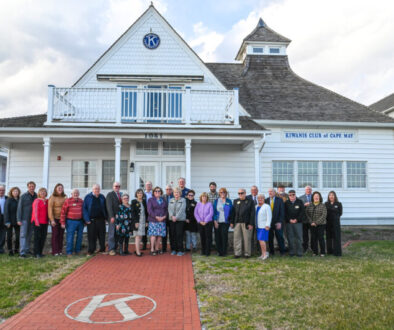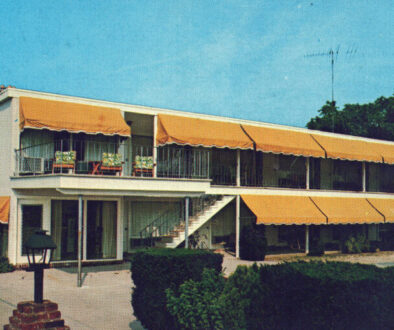Summer Marshes Along the Bay
Most of Cape May County is bordered by marshes both on the bay and the ocean. They are such beautiful places. Really high tides just before sunset on the coastal marshes is one of my favorite experiences in the area. The sun reflecting off glass-like water and dark green marshes is simply a thing of beauty. Add to this mosaic of colors lots of egrets and other birds pushed onto the highest dry ground and you are going to be spending a lot of time editing photos.

The marshes on the ocean side of the peninsula are quite different in appearance to those on the bay though many of the birds are quite similar. The bay has a lot taller vegetation with quite a few Phragmites in places. These marshes have a distinctive smell as well as appearance. In the summer heat, particularly when there is no wind, it feels like the smell and atmosphere create a mass you can cut. Biting flies and mosquitoes also like it. Such a concoction must be great for birds—and it is.
These marshes start at Del Haven and stretch all the way up into Cumberland County. Access to the marshes is always off route 47 so you can try lots of them on a trip till you run out of time. Many are very similar to each other; first going past a few houses, fields, and trees then coming out in open marshes before reaching the bay. Many of these tracks have a few small communities with houses at the end looking over the bay to the west and marsh to the east: the best of both worlds with majestic, but different, sunrises and sunsets. Being out with nature and tranquil settings isn’t everyone’s cup of tea but I will take it over hustle and bustle every time.
High’s Beach, Pierce’s Point, Kimble’s Beach, and Cook’s Beach Roads are all short distances from one another and south of the more built-up Reed’s Beach Road. Many of the birds out here are tricky to see but have loud voices and often make a racket as if to make up for being secretive. Not only do they go at it in the daytime, but they also often party at night too.
The Willet was named after its call—a rapidly repeated, loud wee-willet. A large and sturdy, somewhat gray shorebird, it is browner in summer. They have a stout, long bill. It will run into the water on the beaches, but in early summer it is more likely in the marsh pools or in places you can only hear it. They hatch their eggs in May and are all done and dusted before the end of June. All the adults then form big noisy gangs and fly around the marsh making a racket for days before these flocks head out as far as South America.
But what about the juvenile birds, you might ask. Well, that is a head scratcher. Years ago while working on a book project, we realized we had no photos of juveniles. That couldn’t be when the adults are such common breeders. It transpired that once the feathers are almost fully grown, they immediately leave the breeding area, presumably heading south to the wintering area. To me this makes no sense at all. I would think they would want to feed up and get some practice at other things in life with Mum and Dad around in a known environment. Hell no. They are out of there the first second they are able. I would love to know the answer to that one, so please let me know if you work it out. I have since found another somewhat colonial breeder, Mississippi Kite, does the same thing. Gotta love it!


The Clapper Rail makes a loud clicking noise. If one calls, another often starts up in response and the quiet marsh suddenly comes alive. Of course, as its name suggests, you could be a bit naughty and clap your hands loudly and fast. This will often do the trick if you want to get them all going.
Clapper Rails are quite big but are incredibly agile and can slip between vegetation “thin as a rail.” Sometimes they can be pushed up to edges or high ‘islands’ on high tides but the best time to see them is at low tides on muddy creek edges. They are wary, strutting along leaning forward; any sudden movement or sound and the neck moves forward, and they run like hell back to the nearest cover. Sturdy legs and long toes are designed to run and not fly unless they must.
Another somewhat grungy bird of the Atlantic marshes with a loud voice is the Seaside Sparrow. They are quite common in suitable areas. The males find stems that sit up above the marsh so to be seen, making sure everyone knows that it is its territory. They will sing there for a long time before flying low over the marsh to another stem; its fat body and rounded wings pull a spiky tail behind it. Large-billed, they throw their head up to push out its Red-winged Blackbird-like song. I say song but, truthfully, it’s not much of one; a few notes and a squeezed out shhhhh as if telling you to be quiet.
The marsh is a noisy place, particularly early in the morning. At first it can all be a little confusing. After a few visits you will quickly get to know the birds; most of them are common and noisy. Each time you go you will also notice the many subtle color tones and patterns in its uneven environment changed even more by wind, light, and time of year. Just like getting to know birds well, once you really think you are starting to work it out, you realize there is so much more to it than you thought. Slowing it down and really getting lost in questions and beauty, wherever you are, is a great place to be!



